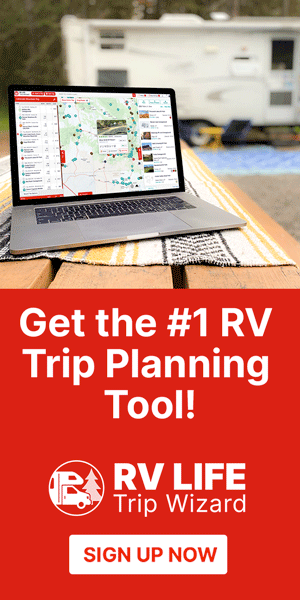The Importance of a Pre-Trip Checklist: Lessons Learned on the Road
When you live on the road, your RV is more than just a vehicle—it’s your home. A place of comfort, safety, and independence. With that in mind, running through a thorough pre-trip checklist isn’t just about maintenance; it’s about preserving your investment and protecting everyone around you.
I learned this lesson the hard way. Early in my travels with Bessie, my beloved motorhome, I made a mistake I won’t forget. I left the awning out when departing an RV park in Texas and knocked down the park’s gate. That incident was not only embarrassing, but it also cost me time, money, and a lot of frustration. Since that day, I’ve sworn never to skip a step in my checklist. Every item, no matter how small it might seem, plays a crucial role in keeping you safe and your RV in tip-top shape.
A Step-by-Step Pre-Trip Routine
Over the years, I’ve developed a detailed routine that covers everything from disconnecting utilities to securing the hydraulic slides on my RV. Here’s a breakdown of my process, which I recommend incorporating into your own travel preparations:
The Night Before Departure

- Stow the Satellite Antenna:
Using a satellite system, ensure the antenna is securely stowed to prevent damage during transit. - Check the Fresh Water Supply:
Aim to have at least three-quarters of your water tank filled with fresh water. This way, you’ll be prepared if you encounter an unexpected delay or limited water access. - Propane Levels:
Keep your propane tank at least three-quarters full. It’s essential for cooking, heating, and powering certain appliances.
The Morning of Departure
- Disconnect and Stow Utilities:
- Power Cords: Unplug and store them properly.
- Water Hoses: Detach and pack them along with the pressure regulator.
- Sewer Hoses: Remove and secure them to prevent any mess or damage on the road.
- Secure the Slides and Leveling Systems:
- If your RV has hydraulic slides, ensure they are fully retracted and locked before moving.
- Confirm that your leveling jacks or blocks are removed and stored properly.
- Conduct an Exterior Walkaround:
- Make sure all outdoor furniture, chairs, and accessories are put away.
- Remove any windshield and side window covers.
- Double-check that all bay doors and compartments are securely latched.
- Electrical and Safety Checks:
- Turn off the breaker at the power pedestal to prevent power surges.
- Test exterior lights, brake lights, and turn signals to ensure proper function.
- Perform a final walk-around to spot any loose or unsecured items.
Hooking Up Your Tow Car

If you’re towing a vehicle, it’s important to follow a systematic approach:
- Align and Attach:
- Position the tow car correctly and attach the tow arms securely.
- Secure Safety Cables:
- Fasten the safety cables between the RV and the tow car as a backup connection.
- Connect the Umbilical Cable:
- This powers the toad’s lights, ensuring they work in sync with the RV.
- Attach the Breakaway Cable:
- This safety feature activates the toad’s brakes if it disconnects unexpectedly.
- Final Testing:
- Shift the tow car into neutral and gently pull forward to confirm proper connection.
- Check that all lights and signals are functioning correctly.
Learning from the Awning Incident
One day, while departing an RV park in Texas, I made a costly mistake. In my haste, I forgot to retract the awning, and as I pulled out, it struck the park’s entrance gate, knocking it down. This mishap was not just embarrassing but also avoidable. Since then, I’ve made it a point to double-check every detail before departure.
The lesson? Even seasoned RVers can overlook small but significant steps. Taking a few extra minutes to review a checklist can save you from expensive repairs and unnecessary headaches.
Final Thoughts on Preparedness
Every journey on the open road begins with preparation. Whether you’re planning a short weekend escape or embarking on a cross-country expedition, thoroughly preparing your RV is essential for a safe and enjoyable trip. Your pre-trip checklist is not just a list of tasks; it’s a safeguard that ensures every vehicle detail is in order before you set off on your adventure.
A well-maintained routine helps prevent avoidable mishaps, like the awning incident I experienced, and ensures your journey is as smooth as possible. The open road is full of opportunities for adventure, and with proper preparation, you can focus on the experience rather than worrying about what might go wrong.
I encourage all my fellow RV enthusiasts to review their own checklists before each departure. Over time, these steps will become second nature, and you can travel confidently, knowing you’re prepared for whatever the road throws your way.
As you embark on your next adventure, remember that extra preparation can make all the difference. After all, not all who wander are lost.




Leave a Reply